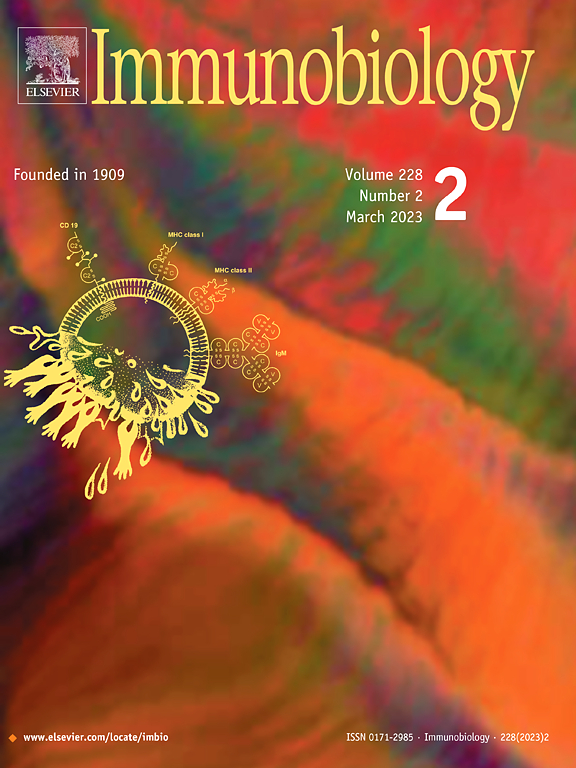Ver ítem
- xmlui.general.dspace_homeCentros e Institutos de InvestigaciónCICVyA. Centro de Investigación en Ciencias Veterinarias y AgronómicasInstituto de PatobiologíaArtículos científicosxmlui.ArtifactBrowser.ItemViewer.trail
- Inicio
- Centros e Institutos de Investigación
- CICVyA. Centro de Investigación en Ciencias Veterinarias y Agronómicas
- Instituto de Patobiología
- Artículos científicos
- Ver ítem
Cytokine expression profile of B. melitensis-infected goat monocyte-derived macrophages
Resumen
Brucella parasitize the macrophage where is able to replicate and modulate the immune response in order to establish a chronic infection. The most adequate response to control and eliminate Brucella infection is a type 1 (Th1) cell-mediated effector immunity. Research in immune response of B. melitensis-infected goats is relatively scarce. In this study, we first evaluated changes in the gene expression of cytokines, a chemokine (CCL2) and the inducible
[ver mas...]
Brucella parasitize the macrophage where is able to replicate and modulate the immune response in order to establish a chronic infection. The most adequate response to control and eliminate Brucella infection is a type 1 (Th1) cell-mediated effector immunity. Research in immune response of B. melitensis-infected goats is relatively scarce. In this study, we first evaluated changes in the gene expression of cytokines, a chemokine (CCL2) and the inducible nitric oxide synthase (iNOS) of goat macrophage cultures derived from monocytes (MDMs) infected for 4 and 24 h with Brucella melitensis strain 16 M. TNFα, IL-1β and iNOS, and IL-12p40, IFNγ and also iNOS were significantly expressed (p < 0.05) at 4 and 24 h respectively, in infected compared to non-infected MDMs. Therefore, the in vitro challenge of goat MDMs with B. melitensis promoted a transcriptional profile consistent with a type 1 response. However, when the immune response to B. melitensis infection was contrasted between MDM cultures phenotypically restrictive or permissive to intracellular multiplication of B. melitensis 16 M, it was observed that the relative IL-4 mRNA expression was significantly higher in permissive macrophage cultures with respect to restrictive cultures (p < 0.05), independently of the time p.i. A similar trend, although non-statistical, was recorded for IL-10, but not for pro-inflammatory cytokines. Thus, the up-expression profile of inhibitory instead of pro-inflammatory cytokines could explain, in part, the difference observed in the ability to restrict intracellular replication of Brucella. In this sense, the present results make a significant contribution to the knowledge of the immune response induced by B. melitensis in macrophages of its preferential host species.
[Cerrar]

Fuente
Immunobiology 228 (3) : 152375 (May 2023)
Fecha
2023-05
Editorial
Elsevier
ISSN
0171-2985
1878-3279
1878-3279
Documentos Relacionados
Formato
pdf
Tipo de documento
artículo
Proyectos
(ver más)
INTA/PNSA-1115052/AR./Epidemiología y desarrollo de estrategias para la prevención y control de enfermedades que afectan la salud pública, enfermedades exóticas y limitantes del comercio internacional.
Palabras Claves
Derechos de acceso
Restringido
 Excepto donde se diga explicitamente, este item se publica bajo la siguiente descripción: Creative Commons Attribution-NonCommercial-ShareAlike 2.5 Unported (CC BY-NC-SA 2.5)
Excepto donde se diga explicitamente, este item se publica bajo la siguiente descripción: Creative Commons Attribution-NonCommercial-ShareAlike 2.5 Unported (CC BY-NC-SA 2.5)


